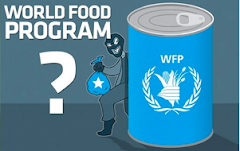CLICK HERE TO VIEW THIS STORY ON HUFFINGTONPOST
At the next meeting of its Executive Board in Rome on November 8, the management of the World Food Programme (WFP) will propose an expanded financing facility to the tune of $557 million to fund advance purchases of food. This is a welcome news that has the potential to cut hunger, by stretching WFP dollars and speeding deliveries.
In a document submitted to the Board, WFP's management argues that its existing facility of $60 million has thus far led to an average of 53 fewer days in response times, as well as cost savings of 3 percent for WFP operations in the Horn of Africa and in Southern Africa. Most importantly, the proposal includes an increase of the WFP's Forward Purchase Facility ceiling to $150 million, which will allow the purchase larger quantities of food at optimal times, improve planning and programming, reduce the need for large in-country stocks, reduce the number of advance financing requests, and allow for more timely delivery to people affected by conflict, floods or other natural disasters.
The expansion of WFP's advance purchasing will have significant consequences for the hungry and malnourished; it is important for WFP's Board to lend this new proposal their full support. In a CGD working paper issued this past April, my coauthors Ben Leo, Owen McCarthy and I argued that emergency food aid would be more effective if it were financed on a multi-year, cash basis by rich countries, rather than on a year-by-year, reactive basis. Our discussions with WFP staff, who provided comments on a draft version of our paper, left us even more convinced that financial instruments could be used to feed the most vulnerable people in poor countries. Last year, the Government of Australia announced a multi-year grant of $130 million over four years to the World Food Programme, giving the agency much-needed flexibility. Together with these resources, an expanded Forward Purchase Facility could eventually enable WFP to purchase food using forward purchase instruments (although this not included in the current proposal). For example, there is no doubt that the need for food in Haiti will continue to be great, for months if not years to come.
While obviously difficult to predict in any given year the magnitude, geography, and number of natural disasters to which the WFP must respond, there likely is a great opportunity for the WFP to realize cost savings while also avoiding sudden shortages of food. Carefully-planned purchases will enable the use of lower cost suppliers and might also allow food to be moved to where it is needed in a timely manner. We commend the WFP for their proposal to expand their Forward Purchase Facility and hope that rich countries will give it their full support.




UN-ACABQ is not of the same opinion with Ms Ramachandran - The UN Auditors reflected on the above proposal :
ReplyDeleteThe reason provided by WFP for the proposed increase of the traditional advance financing to $407 million from $120 million is to bring the level of the ceiling, as a percentage of the biennial programme of work to 5.4 percent from the current 2.1 percent. This would restore the ceiling closer to its original 5 percent envisaged when the traditional advance financing was created in the 2004/2005 biennium (paras. 36 to 37 and Table 3). Information with respect to measuring the leverage of WFP’s advance financing mechanisms is provided in paragraphs 49 to 54 and tables 4 and 5. The Advisory Committee notes that WFP considers its new proposals conservative, when compared with the leverage limit of some commercial banks. The Committee does not consider that the circumstances of WFP and of commercial banks are analogous.